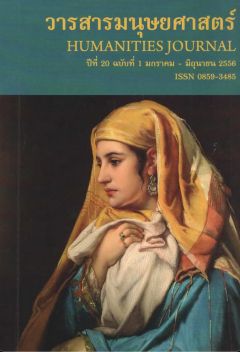A Study of Figurative Language That Conveys Connotation Related to American Cultural Values in Pop Songs: The Case of Taylor Swift
Main Article Content
Abstract
The main objectives of this study are: 1) to identify common connotations expressing American cultural values through figurative language in Taylor Swift’s songs, and 2) to analyze how those American cultural values are conveyed by figures of speech. The frameworks employed in this study are those of figurative language and connotation (Partington, 1998 cited Leech, 1974; Dobrovol’skij & Piirainen, 2005; Ray, 2007; 2008; Caroll, 2008; Pence, 2012) and American cultural values suggested by different experts (e.g Hofstede, 1984; Nooteboom, 2002; Perry, Chase, Jacob, and Von Laue, 2008; Brewer, 2009; Hollander, 2011 Lamb, Hair, & McDaniel, 2011). This qualitative study employs the methods of descriptive and interpretive content analysis (Miles & Huberman, 1994; Strauss & Corbin, 1998).
Three common types of figure of speech that express connotations related to American cultural values were found: metaphor, simile, and hyperbole. Four aspects of American cultural values of love and care, individualism, honesty and trust, and liberalism were revealed through four main themes: bond and relationship, independency, honesty, and dignity respectively. These types of figure of speech play different roles in connoting American cultural values. With shared background knowledge between the lyricist and the audience, metaphors and similes were employed in the songs to help convey American cultural values that the lyricist wanted to share by empowering the intended messages with the device of making indirect and direct comparison between certain entities and intended meanings. The employment of hyperbole was employed to emphasize the intended values by exaggerating the connoted messages. In brief, the three types of figure of speech appear to be powerful tools in Taylor Swift’s songs to express American cultural values. This finding seems to suggest that the power of these literary devices should effectively express intended messages in other genres of literary work and in any culture as well.


